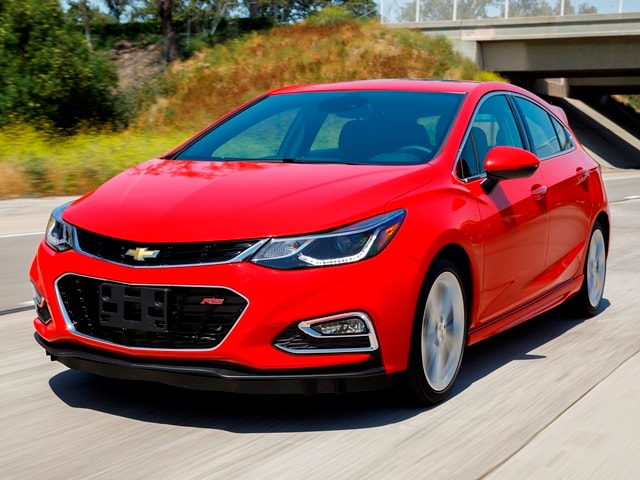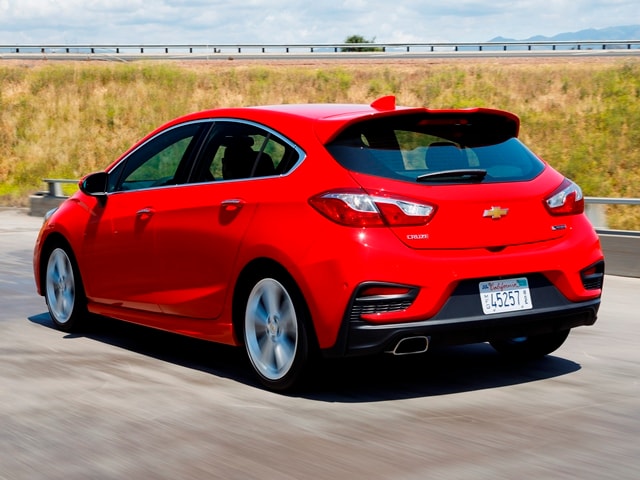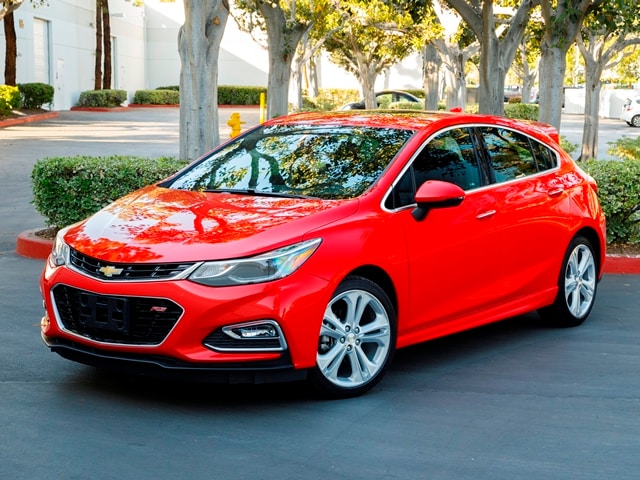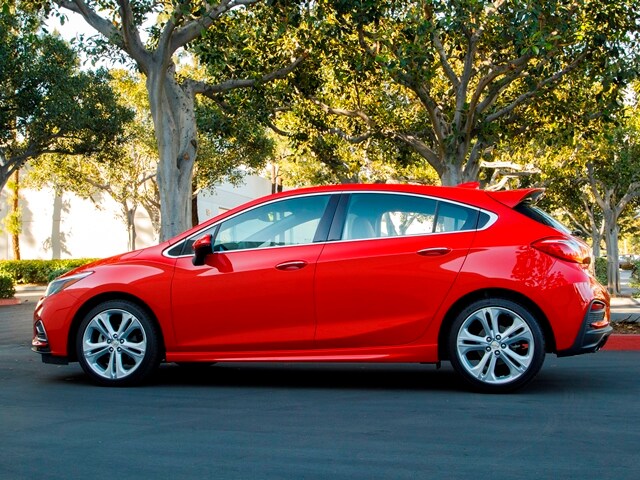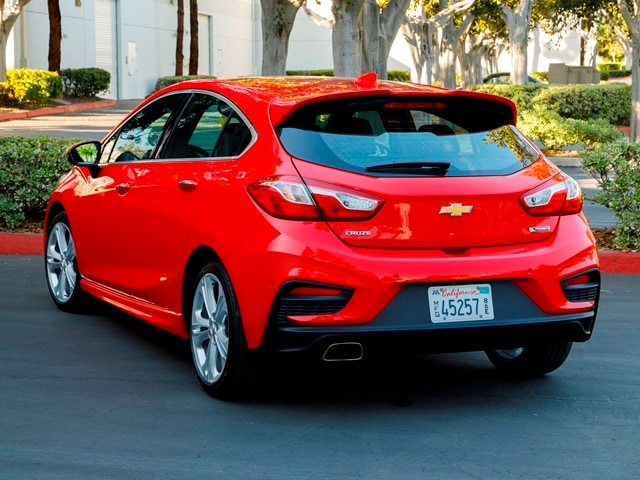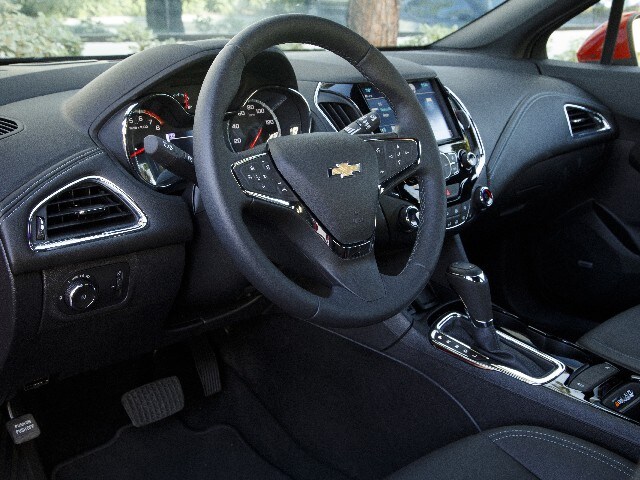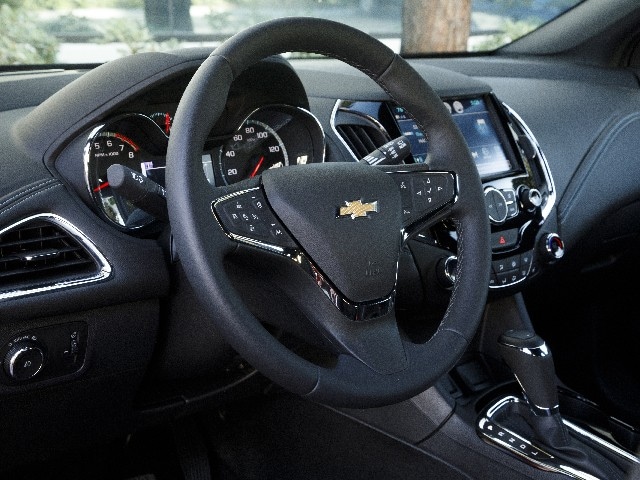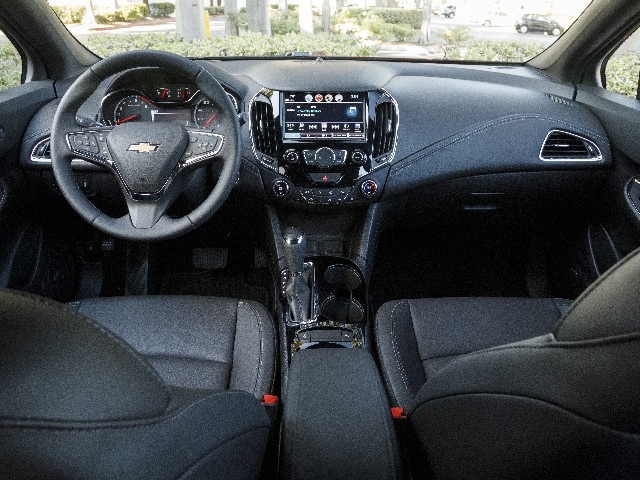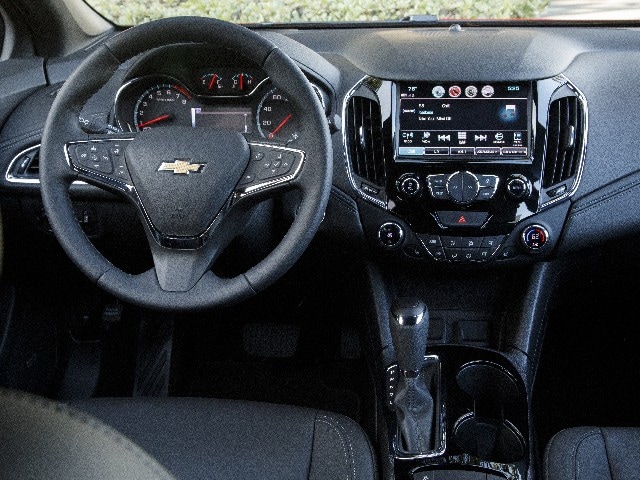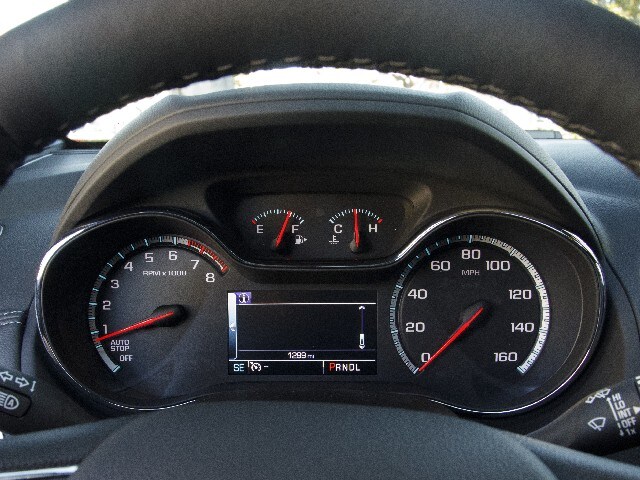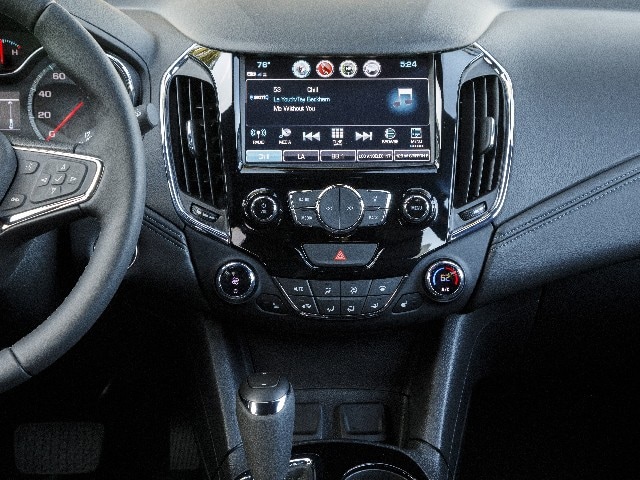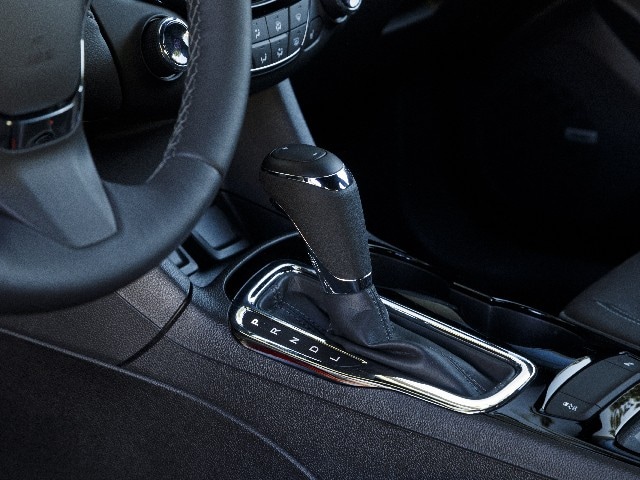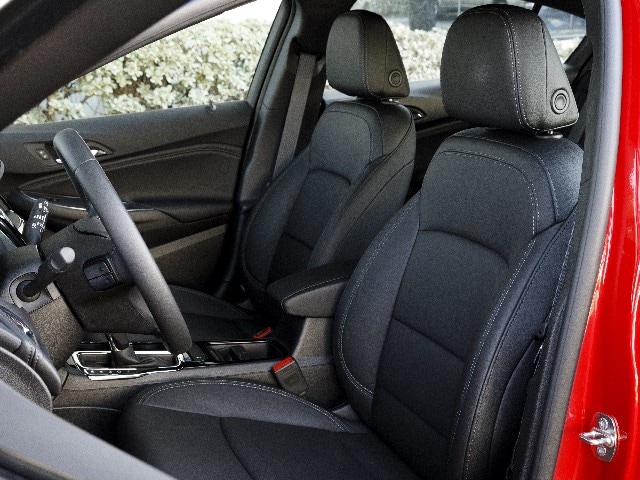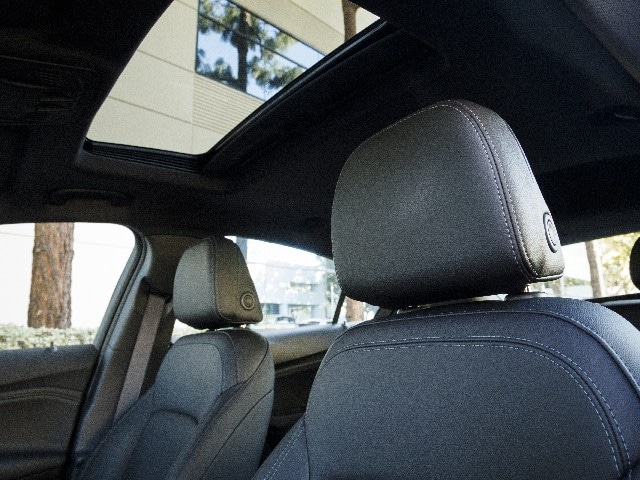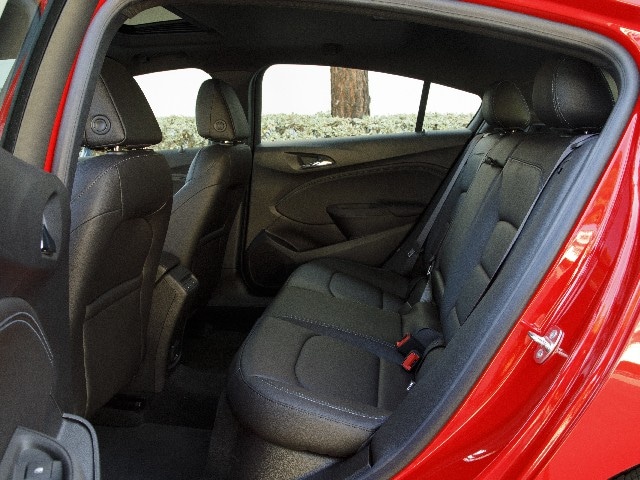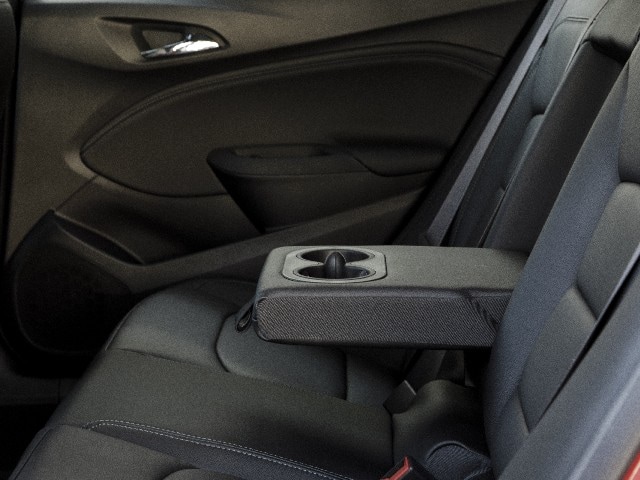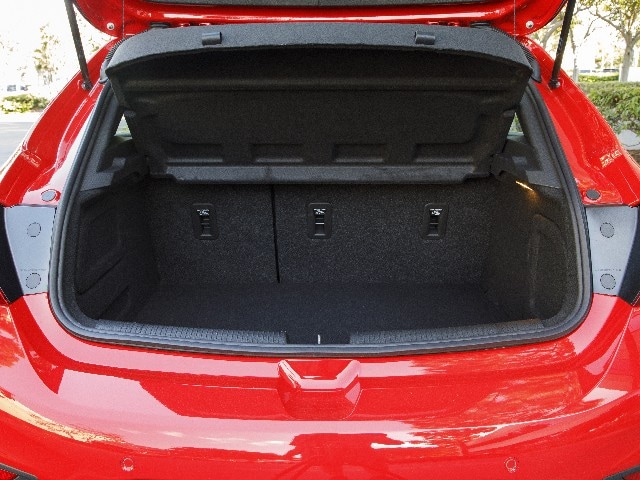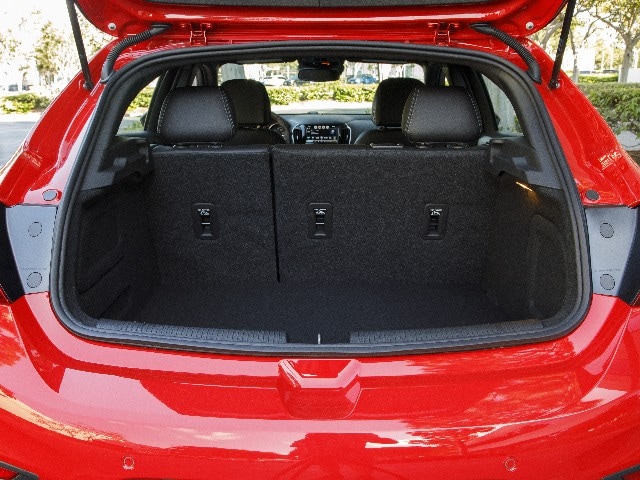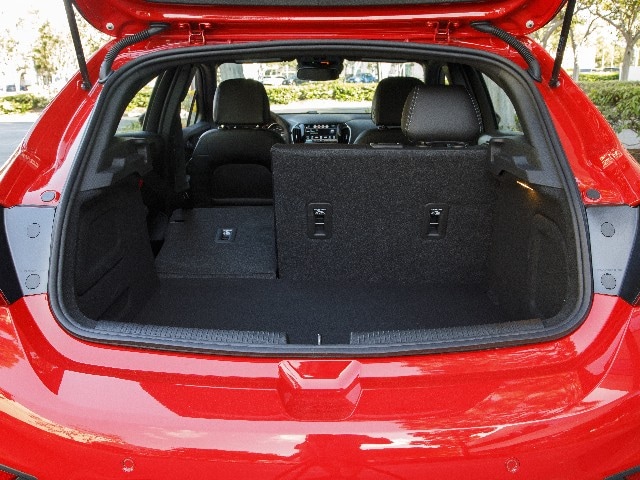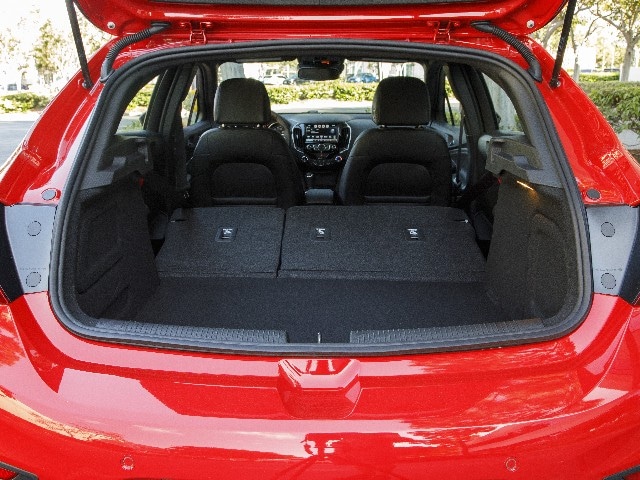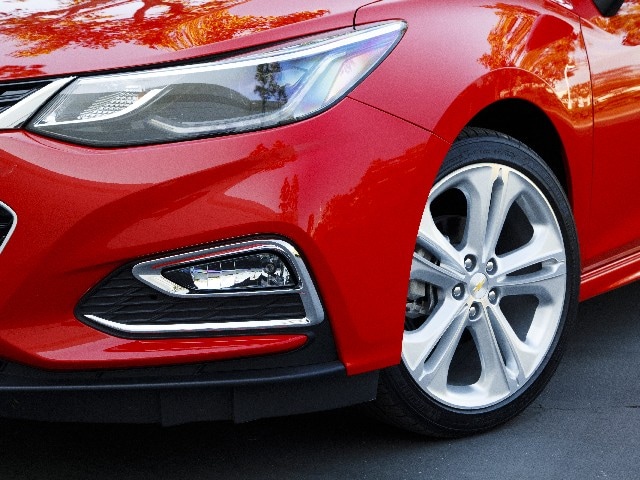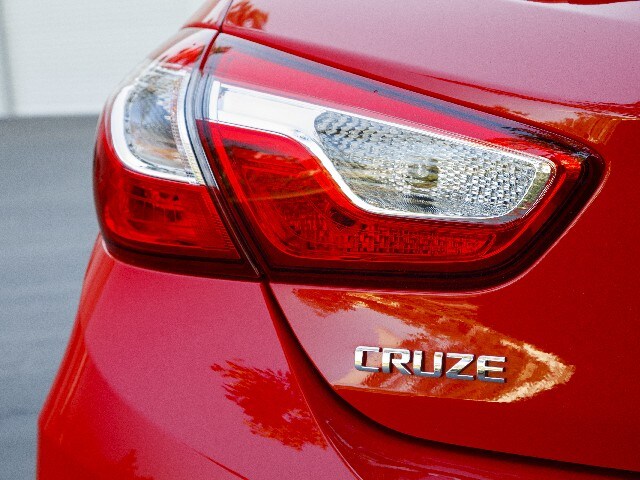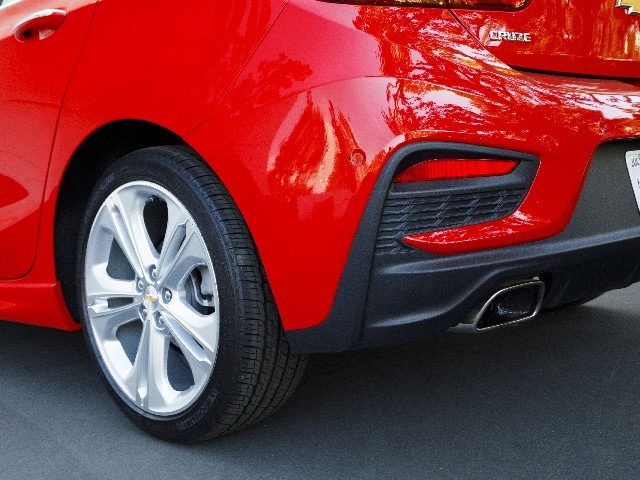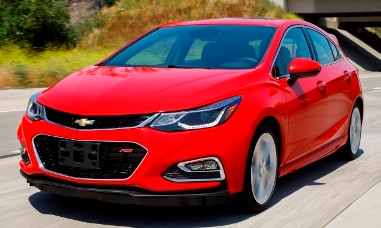
Starting Price: $22,115 | Price yours
Above Average: Comfort, highway ride, infotainment system
Below Average: Cargo area, enthusiast-style performance
Consensus: Not best at anything but good at everything
The Chevy Cruze reminds us of the very pleasant, easy-to-be-around best friend that has trouble reaching “love interest” status. There’s nothing wrong with it and there’s plenty right with it, but like that best friend there’s something about its mild-mannered, warm-puppy nature that might not fire up passion the way a more emotional car can. Does that mean you should dismiss the Chevy Cruze out of hand? Well, no, because hopefully you know where this RomCom is going. By the third act of our comparison test movie, we liked the Chevy Cruze more and more. Is it love at last sight? Is it enough to make it permanent? Well, maybe. By the time the final credits of our comparison test rolled, we had gained a significantly greater appreciation of what the Cruze brings to the segment, namely, satisfying versatility. To many buyers that’s more than enough to prompt wedding bells.
2017 Chevrolet Cruze
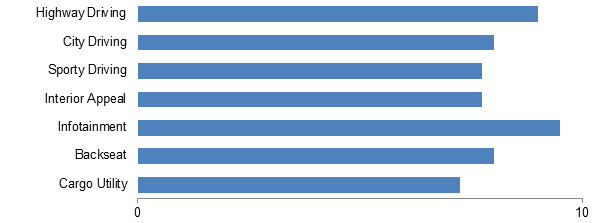
Highway Driving
The Chevrolet Cruze’s strong suit is highway driving. It makes hundreds of Interstate miles disappear behind it in the effortless fashion of larger American cars. While some of its competitors rattled our teeth over expansion joints, the Cruze’s suppler suspension absorbed them more successfully, and the car is also relatively free of wind and tire noise. The 153-horsepower turbocharged 4-cylinder engine doesn’t sound that impressive, but we were never caught short. But the Cruze does lack the availability of adaptive cruise control, a nicety on the highway and in stop-and-go commutes.
City Driving
The Cruze offers easy-to-handle dimensions, and its good visibility plus a clear back-up camera display make it a breeze to park. For around-town use, the powertrain received praise, but the throttle input came in for some criticism for the effort it required. (Weak throttle leg, buddy?) The foot-operated parking brake, a throwback in this era of electric parking brakes, also was an issue for some of the testers.
Sporty Driving
The sportier and more powerful Mazda3 and Civic were clearly the most fun-focused cars in this test, but the Cruze met the challenge of our test route’s twistier bits with more ability than the Impreza. The Cruze actually demonstrated remarkable grip when pushed, but didn’t seem particularly eager to explore those limits. Back in the real world, the Cruze will definitely deliver all the performance 95 percent of its drivers will ever ask of it.
Interior Appeal
The interior of the Cruze drew the “I like it, but I don’t love it” phrase that characterizes so many things about the car. Our most curmudgeonly critic said, “Interior isn’t anything to brag about with…hard surfaces, uncomfortable/unsupportive seats, and bright flashing on the center console that blares light when the sun hits it.” Other members of the test group had much kinder things to say, including praise for the overall dash layout. The heated rear seats also got kudos, although our curmudgeon decried the $865 cost of the option. We all noted the Cruze didn’t have as much rear-seat space as the Civic or Impreza, but it looks nice.
Infotainment
When it came to rating infotainment systems the Cruze’s shined the brightest. It got stellar marks, including two 10s, from all the judges who liked its big, easy-to-read icons and intuitive touchscreen operation. These days Apple CarPlay and Android Auto compatibility are moving from a nice-to-have to the norm, and the integration in the Cruze system is very good. In fact, no one seemed to have any complaints about it, and with complicated infotainment systems that’s a big endorsement.
Rear Seat Room
From a usability standpoint, the rear seats in the Cruze are the smallest in the class, but that doesn’t mean they are unusable; it simply means that a couple of the vehicles it competes with have roomier rear-seat areas. The seats themselves are perfectly comfortable for two adults, and you could squeeze in a third person in a (literal) pinch. Rear-seat heaters, an option, are an upscale touch.
Cargo Utility
One thing our group of testers was unanimous about was the Cruze’s relative lack of cargo space. Again, as with the rear seating area, it is not that the cargo area in the Cruze is so small it’s not usable. For most situations it offers more than enough luggage space, but it simply isn’t as big as the cargo areas in the other three. With the second row folded (the seats fold in a 60-40 split) the cargo space increases markedly but remains the smallest in our comparison set.
Fuel Economy
The turbocharged 1.4-liter 4-cylinder engine offers praiseworthy fuel economy, but, to provide some context, one competitor, the Honda Civic, offers significantly more horsepower (180 in our Civic Sport Touring versus the Cruze’s 153) and better overall fuel economy (up to 34 combined mpg in the Civic compared to 32 combined mpg for the Cruze). The Chevy does offer more overall peak torque than most Civic Hatchbacks (177 versus 162), and its overall drivability is just fine. Rather than slam the Cruze, we have to marvel at what Honda engineers have accomplished, partly through the use of a CVT versus a conventional transmission.
Resale Value
On the cost-to-own and resale value fronts, the Chevrolet Cruze does remarkably well. In fact the Cruze is right there with the Honda and Subaru in its 5-Year Cost to Own figures, and that is stellar territory, because both Honda and Subaru are known for their excellent resale and CTO numbers.
Photo Gallery: 2017 Chevrolet Cruze

